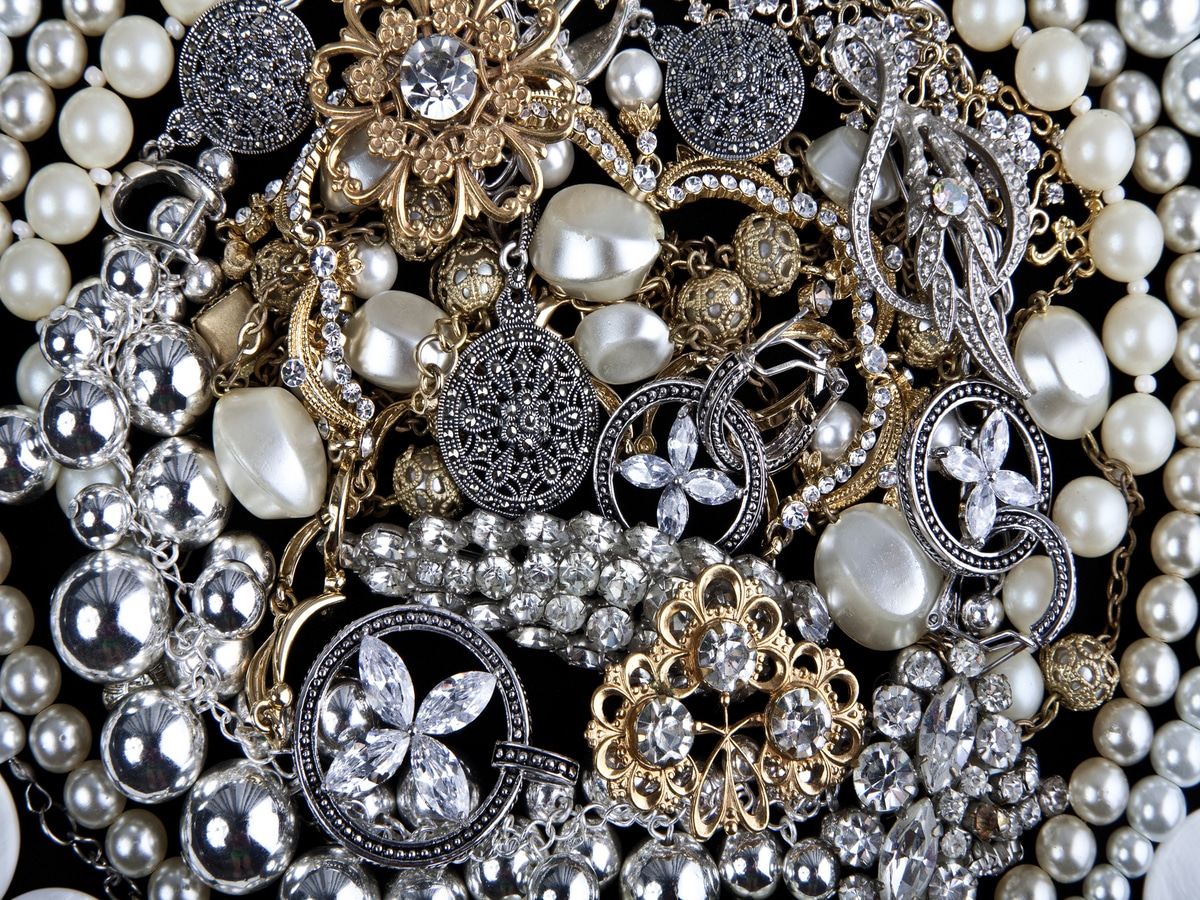Ultimate Guide to White Gold vs Yellow Gold 2024

White gold and yellow gold are two of the most popular types of gold used in jewelry. Both metals have their own unique properties and benefits, so it can be difficult to decide which one is right for you.
In this guide, we will compare and contrast white gold and yellow gold in terms of color, durability, price, and maintenance. We will also discuss the pros and cons of each metal so that you can make an informed decision about which one is best for you.
Whether you are looking for a classic yellow gold ring or a modern white gold necklace, we have the information you need to make the right choice. So read on to learn more about white gold vs yellow gold and find the perfect metal for your next jewelry purchase.
What is the Difference?
The main difference lies in their color when choosing between white gold and yellow gold. Pure yellow gold has a warm, traditional look, while white gold has a modern and sleek appearance. However, the two types of gold also differ in how they’re made. Yellow gold is made by mixing pure gold with copper and zinc, while white gold is made by mixing pure gold with white metals like nickel, palladium, or silver. Choosing white or yellow gold is a matter of personal preference and style.
Composition
White gold and yellow gold have different compositions, which is crucial in determining their physical characteristics. Yellow gold is typically made by mixing pure gold with an alloy metal of copper and zinc, giving it its distinct warm tone. On the other hand, white gold is created by combining pure gold with white metals like nickel, palladium, or silver, which results in a silvery-white appearance. The type and amount of metal alloy used also affect factors such as durability, hypoallergenic properties, and resistance to tarnish. Understanding these differences can help you decide between the two options.
Pros and Cons of White Gold
White gold has its own set of advantages and disadvantages when compared to yellow gold. Plus, it has a modern, sophisticated look that appeals to many people. It also pairs well with various gemstones, making it an excellent choice for engagement rings and other jewelry. However, one potential downside is that white gold can sometimes cause allergic reactions due to the presence of nickel in some alloys. Additionally, it may require more maintenance than yellow gold since the rhodium plating used to enhance its color can wear off over time.
Pros and Cons of Yellow Gold
Yellow gold has been a classic choice for jewelry for centuries, offering its unique advantages and disadvantages. Firstly, it has a traditional warm, golden hue that many people find very appealing. It is also more hypoallergenic than white gold since it typically contains less nickel, suitable for people with sensitive skin. However, yellow gold may be more prone to scratches and wear and tear than white gold due to its softer nature. The traditional yellow gold look also doesn’t fit their style or preferences.
How Do You Choose?
Ultimately, the choice between white gold and yellow gold comes down to personal preference and lifestyle factors. Consider your skin tone, the color of the gemstones you plan to pair it with, and any allergies or sensitivities you may have. If you lead an active lifestyle, yellow gold may be a better choice due to its durability. However, if you’re drawn to modern styles and want a sleek look for your fine jewelry pieces, white gold may be the way to go. Both options have pros and cons, so take the time to weigh them carefully before deciding. Ultimately, the most critical factor is choosing a metal you love and feel comfortable wearing for years to come.
Appearance, Cost, Durability, and Maintenance
There are key differences to remember when comparing white gold and yellow gold. In terms of appearance, yellow gold has a classic, warm glow that many people love, while white gold has a modern, sleek look thanks to its rhodium plating.
Regarding cost, yellow gold is often less expensive than white gold due to the added cost of the rhodium plating process.
In terms of durability, yellow gold is generally more scratch-resistant and durable than white gold but can be prone to bending or denting. White gold, on the other hand, may require periodic re-plating to maintain its bright, white color but is less likely to bend or dent.
Maintenance-wise, both metals require regular cleaning and care to keep them looking their best. The choice between white gold and yellow gold comes from personal preference and individual needs. Whether you prioritize appearance, cost, durability, or maintenance, take your time to evaluate.
Maintaining the Shine
Follow these simple tips to keep the shine and beauty of your white or yellow gold jewelry:
- Avoid exposing your jewelry to harsh chemicals such as bleach or chlorine. These chemicals can damage the metal and cause discoloration.
- Remove your jewelry before engaging in physical activities that may cause it to scratch or dent.
- Please store your jewelry in a safe place when not in use to prevent it from being exposed to dust and moisture.
- Clean your gold jewelry regularly using a soft cloth and mild detergent to remove dirt and oil buildup.
- Bring your gold jewelry to a professional jeweler for regular check-ups and cleaning to ensure it stays in top condition.
Following these tips ensures that your white or yellow gold jewelry remains shiny and beautiful for years.
Best Practices
Cleaning white or yellow gold jewelry is essential to maintain its shine and beauty. Here are some best practices for cleaning both types of jewelry:
- Mix a solution of warm water and mild dish soap in a bowl.
- Gently scrub the jewelry with a soft-bristled toothbrush, paying attention to hard-to-reach areas.
- Rinse under warm running water and pat dry with a soft cloth.
- Soak the jewelry in the soapy solution for stubborn dirt or grime for a few minutes before scrubbing.
- If you need help cleaning a particular piece of jewelry or require special care, always consult a professional jeweler.
They can provide specialized cleaning solutions and recommendations to ensure your jewelry stays beautiful for years. Remember, proper and regular cleaning is essential in keeping your white or yellow gold jewelry looking its best.
Common Myths
Several myths surrounding white gold and yellow gold need to be debunked:
- Many believe white gold is more valuable than yellow gold, but this is untrue. Both types of gold have the same value based on their weight and purity.
- Some people believe white gold is a healthier option for sensitive skin, but this is a myth. Allergic reactions to jewelry are typically caused by other metals in the alloy, not the color of the gold itself.
- Many people think yellow gold is outdated or old-fashioned, but it remains a classic and timeless choice for jewelry.
It has been used for centuries and continues to be popular today. Ultimately, choosing white gold and yellow gold is a matter of personal preference and style. So don’t let these myths affect your decision; choose what you love and enjoy wearing!
History and Cultural Significance
Humans have treasured gold for thousands of years, and both white and yellow gold have played essential roles in various cultures throughout history. In Ancient Egypt, gold was associated with the sun god Ra and was believed to have divine properties. Yellow gold was often used in elaborate jewelry and tomb decorations. Meanwhile, white gold became popular in the Art Deco era of the 1920s and 1930s, when it was used to create geometric, streamlined designs.
In some cultures, the choice between white and yellow gold is symbolic. In India, for example, a yellow gold engagement ring is seen as encouraging and is often used in traditional wedding jewelry. White gold, on the other hand, is associated with modernity and sophistication. Yellow gold symbolizes wealth and prosperity in China and is often gifted during important occasions.
Overall, both white and yellow gold have rich histories and cultural significance. Choosing one over the other depends on your preference and the occasion you buy jewelry. So explore both options, learn about their history, and decide what speaks to you!
Choosing the Right Metal
When choosing between white gold and yellow gold, it’s important to consider your style. Yellow gold may be the right choice if you prefer warmer tones and traditional designs. On the other hand, if you prefer cooler tones and more modern designs, white gold may be a better fit.
It’s also important to consider how the metal will complement your skin tone. White gold can look stunning on those with cool undertones in their skin, while yellow gold can bring out the warmth in those with warm undertones. Ultimately, the most important factor is what makes you feel confident and beautiful in your jewelry. So take some time to explore both options and choose the one that truly reflects your style and makes you feel your best. Remember, whether it’s white gold or yellow gold, the beauty of the metal lies not only in its appearance but also in its rich history and cultural significance.
Examples of Popular Jewelry Styles
White gold and yellow gold both offer a range of options when it comes to jewelry styles. In white gold, popular types include delicate and modern designs for engagement rings and bold statement pieces with diamonds and other gemstones. Yellow gold is often used for classic designs like hoop earrings, chunky chains, and intricate bracelets with filigree work.
One of the latest trends in jewelry is mixing metals. This allows you to combine yellow gold’s warmth with white gold’s coolness to create a unique look that perfectly matches your style. Whether you prefer traditional or modern designs, this is a great way to add character to your jewelry collection and stay on-trend. Some popular mixed metal combinations include white gold bands with yellow gold accents or a ring with yellow and white gold intertwined in the design. Whatever your preference, the possibilities for creating your unique look with these versatile metals are endless.
Future Trends
As trends in fashion and jewelry continue to evolve, so does the design of white and yellow gold jewelry. We expect to see more eco-friendly and sustainable options for both metals shortly. Recycled gold is becoming increasingly popular as consumers become more conscious about the environmental impact of mining for new gold.
In terms of design, we may see an increase in the use of alternative materials, such as wood or ceramic, incorporated into white and yellow gold jewelry pieces. This will add a unique touch to traditional designs while also promoting sustainability.
Another trend that is expected to gain popularity is personalized jewelry. Technological advancements make it easier to create custom designs that incorporate white and yellow gold. This will allow individuals to express their individuality through jewelry tailored to their style and preferences.
Additionally, we may see a rise in minimalist and dainty designs that emphasize simplicity and elegance. These pieces can be worn independently for a chic, understated look or layered together for a dramatic effect.
Overall, the future of white and yellow gold jewelry design promises to be exciting and innovative as designers push boundaries and explore new possibilities.
Which is Better – White Gold or Yellow Gold?
There is no right or wrong answer when choosing between white and yellow gold. Both metals have unique qualities and can be used to create stunning jewelry pieces, such as an engagement ring or wedding ring. It ultimately comes down to personal preference and the style that you are trying to achieve. White gold offers a modern and sleek look, while yellow gold has a classic and timeless appeal. Whichever metal you choose, the most important thing is to select a piece that makes you feel confident and beautiful.
FAQ:
What is red gold and rose gold?
Red gold is a gold alloy with copper as its primary alloying metal. The amount of copper in red gold determines its color, with more copper giving a deeper red hue. Red gold is often used in jewelry as a durable and attractive metal.
The term “red gold” can also refer to a specific type of red gold alloy that is 75% gold and 25% copper. This alloy is known as 18K red gold.
Rose gold is a gold alloy with copper as its primary alloying metal. The amount of copper in rose gold determines its color, with more copper giving a deeper pink hue. Rose gold is often used in jewelry as a durable and attractive metal.
What is the difference between 14K white gold and 18K white gold?
The main difference between 14K white gold and 18K white gold is the purity of the gold. 14K white gold is 58.3% pure gold, while 18K white gold is 75% pure gold. The remaining percentage in both cases comprises other metals, such as copper, silver, and zinc.
This difference in purity affects the gold’s color, durability, and price. 14K white gold is typically brighter than 18K white gold. 18K white gold is more durable than 14K white gold but is more expensive.
Ammar has started several online businesses and is a blogger who loves providing quality content to help others. He is involved with affiliate marketing, domain names, NFTs, and cryptocurrencies. Check out my blog if you want to learn more about these areas and business in general.






